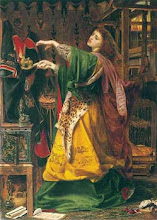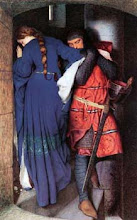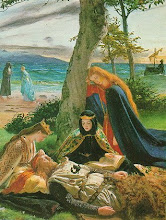The allure of the Holy Grail has fascinated writers and ensnared knights for more than 1,000 years.
From Malory to Monty Python, the eternal chalice – said to be the very cup from which Jesus drank at the last supper – has become enshrined as one of popular culture’s most spiritual icons.
But while Scotland has been given the credit for being the Grail’s final resting place – thanks largely to Dan Brown’s hugely-successful novel The Da Vinci Code – a new book by a Welsh academic says Wales’ claim to the relic is stronger.
Since The Da Vinci Code was published in 2003 it has sold more than 60 million copies and been made into a blockbuster movie.
It has also led to hundreds of thousands of visitors making a pilgrimage to Rosslyn Chapel near Edinburgh, which the book claims is the Grail’s final resting place.
But Grail expert Dr Juliette Wood of Cardiff University, a New York-born Welsh convert, said theories linking the Grail to Scotland were relatively new.
“Wales’ associations with the Grail stretch back to the 14th century,” she said.
Dr Wood, who specialises in Welsh folklore and Celtic literature, dismisses Brown’s assertion that the Grail was discovered by the Knights Templar who buried it beneath one of the pillars of Rosslyn Chapel.
“Stories in the past century have tended to romanticise the Knights Templar as some kind of special forces of Christianity but in reality they were simple soldiers, admittedly brave, but ultimately they followed orders,” said Dr Wood, who is also secretary of the Folklore Society in London.
“Dan Brown’s book has certainly revived interest in the Grail but when it talks about masonic involvement and the Knights Templar, it goes too far.
“The story about Rosslyn Chapel’s links with the Grail is only about 20 years old.
“Wales’ link is much stronger. Wales has Arthurian romances which refer to the Grail, but Scotland doesn’t have that. There are a number of Holy Grail romances written in Scotland but there has not been anything found in Gaelic.”
Dr Wood said possibly the strongest association Wales had with the Grail came from the story of Peredur the Son of Evrawc, which appears in the Mabinogion.
“There are strong links between Peredur and the Knight Percival from the King Arthur romances.
“The two are not the same but there are strong similarities between them,” she said.
“The story of Peredur of Wales is that he sets out on a quest to find the Grail.
“In a castle one night, it appears not as a shining beacon, but in the form of his cousin’s head, floating on a platter or dish in a pool of blood.
“Peredur then avenges his uncle by slaying the nine witches of Gloucester.
“What happens to the Grail after the death of the witches however is a mystery, it appears to disappear into the mists of time.”
Other theories which link the Grail to Wales include an ancient Celtic myth surrounding the Nanteos Cup, a sacred life-giving cauldron, thought to have been the basis for many Grail stories.
More recently a theory was put forward by former Western Mail journalist and bard, Owen Morgan, who claimed the Grail was not an object but the beautiful landscape of Wales.
Many further meanings have been devised for the Grail, which has been linked to the Celts and King Arthur, the eucharistic rites of Eastern Christianity, ancient mystery religions, Jungian archetypes, dualist heresies, Templar treasures and even the alleged descendants of Christ and Mary Magdalene.
The common thread running through all the stories is the assumption that the Grail legend has a single source with a meaning that is concealed in the romances themselves.
“I think the enduring fascination of the Grail is its elusiveness, it’s like a puzzle no-one yet has solved and people see it as a challenge, just like the ancient knights,” said Dr Wood, who left New York at the age of 23 to learn Welsh, but ended up staying.
“I saw a postcard in a shop in Aberystwyth depicting the Nanteos Cup and I became hooked on the Grail legend and its associations with Wales ever since.”
Eternal Chalice: The Enduring Legend of the Holy Grail (I.B.Tauris, £18.99), is out now


































0 comments:
Post a Comment